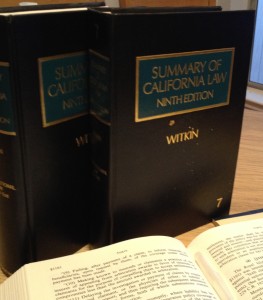Causation in Legal Malpractice: the “Substantial Factor” Test
Generally speaking, the test for causation in legal malpractice requires the plaintiff to prove that the plaintiff’s damages would not have occurred “but for” the attorney’s breach of a recognized legal duty. This is commonly known as the “but for” test.
However, real world situations don’t operate in a vacuum, and sometimes a plaintiff’s injuries have multiple independent causes or triggers. Where a plaintiff suffers injuries resulting from multiple independent causes, and each of those causes would have been sufficient–without the others–to cause the resulting damages, courts accept a secondary test for causation in legal malpractice actions: the “substantial factor” test.
THE SUBSTANTIAL FACTOR TEST FOR CAUSATION IN LEGAL MALPRACTICE.
The “substantial factor” test asks whether the defendant attorney’s wrongful conduct was a “material element of” and a “substantial factor in bringing about” the plaintiff’s injuries. If so, the defendant attorney’s professional negligence is considered a “legal cause” of the plaintiff’s harm even if other causes would have also caused the injury.
The fact that the plaintiff would have suffered injury even without the attorney’s wrongful conduct will not provide a complete defense to the attorney in these situations. However, the plaintiff must prove all of the critical elements of this test:
1. The defendant attorney’s breach of duty was a material element of the plaintiff’s injury and an actual cause of the plaintiff’s damages.
2. The various causes of the plaintiff’s injury must be concurrent and independent.
If multiple causes combined to bring about the plaintiff’s injuries, but none of them would have caused the harm but for the existence of the others (in other words, if the various causes–including the lawyer’s wrongful conduct–“combined” to cause the harm) the usual “but for” test applies and the substantial factor test is not relevant.
Note also that an attorney’s wrongful conduct is not generally considered a “substantial factor” in causing harm if the plaintiff would have suffered the damages anyway (i.e., whether or not the attorney engaged in legal malpractice).
SUPERSEDING CAUSES BREAK THE CHAIN OF CAUSATION
Negligence law recognizes the concept of “superseding causes,” meaning unusual actions or occurrences which “intervene” in a situation and break the chain of legal causation. Plaintiffs in legal malpractice actions should be aware that if an unexpected or extraordinary event occurs between the attorney’s malpractice and the client’s damage or injury, and if that event is judged to be the actual cause of the plaintiff’s injury, the court may deem the event a “superseding cause” which relieves the defendant attorney of liability for the harm. This is a relatively unusual situation, but it can happen.
Superseding causes must be unusual and/or extraordinary. Generally speaking, foreseeable actions and events do not constitute superseding causes. This includes adverse judgments by courts of law, normal business occurrences, and even subsequent legal malpractice.
For example, if an attorney commits professional negligence, the client hires new counsel, and then the second attorney also behaves in a legally negligent manner, the second lawyer’s malpractice is not usually considered a superseding cause which cuts off the liability of the original attorney. (The client may have a separate case against the second attorney as well.)
***
Disclaimer: Causation, like other elements of a legal malpractice claim, is a complicated topic, and articles like this can only touch on the basic issues. The details of a legal malpractice claim are individualized and complicated. Your rights and experiences may vary. Never use an article (or any online source) to evaluate your legal claims. Always speak with an experienced lawyer promptly to obtain a personalized evaluation of your claims, possible damages, and options.















